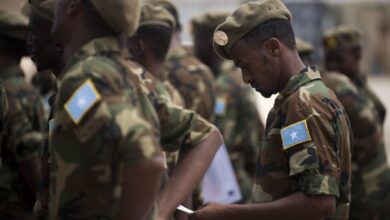Somalia
Somalia, in long form the federal republic of Somalia is a country located at the eastern end of the Horn of Africa. The territories which had once been administered by the British form Somaliland, a structured country, but not recognized by the international community which does not wish to see the borders changed.
Somalia’s history
From Antiquity to the 1950s
Some authors claim that during Antiquity, the region known by the Egyptians as the country of Punt was in Somalia. The coast was known by the Romans, the Greeks and the Indians since it was the most important commercial center for myrrh and frankincense as well as in less importance for ebony and gold. Arab traders settled on the coast and the Somalis adopted Islam, which became established permanently from the 13th century: it was the beginning of the sultanate. During the Middle Ages, relations with the neighboring kingdom of Ethiopia were strained. In the sixteenth century, Portugal became interested in the Somali coast, without managing to settle there. From 1875, Great Britain, France and Italy claimed Somalia, while the Ethiopian emperor Menelik II planned to invade the country. During the 1880s and 1890s, Italy acquired various territories on the Benadir coast, which it united in 1905 into a colony, formalized by a law of April 5, 1908.
Despite resistance to the Western occupation organized by Mohamed Hassan, Benito Mussolini’s Italy ended up controlling Somalia as well as Ethiopia and northern Kenya, until the Second World War. On August 3, 1940 (or the 4th according to other sources), approximately 40,000 Italians invaded British Somalia under the command of General Guglielmo Nasi. They seize in a few days several badly defended cities. British forces in Somaliland receive some reinforcements and a new commander, Major General Godwin-Austen. Deeming the forces involved too uneven, the latter asked on August 15 the withdrawal of British troops. The last British soldiers were evacuated to Aden on the 17th. The Italians seized Berbera on the 19th and annexed British Somalia to Italian East Africa. During this campaign, British casualties were 38 killed, 71 injured and 49 missing compared to 465 killed, 1,530 injured and 34 missing for the Italians. These territories will ultimately be lost by Italy, following its defeat at the end of the Second World War.
Trust Territory of Somalia
In 1949, the United Nations (UN) granted Italy trust territory over Somalia while a year earlier, the Ogaden region had been assigned to Ethiopia. The current flag was adopted on October 12, 1954.
State of Somalia
On June 25, 1960, the British Somali Protectorate gained independence as the State of Somalia. The State of Somalia disappears on July 1 when it merges with the Trust Territory of Somalia under Italian administration to form the Somali Republic.
Somalia republic
From 1960 to 1969, and under the chairmanship of Aden Abdullah Osman Daar, then Abdirashid Ali Shermarke, Somalia tried to establish a democratic government, but clan struggles between the north and the south of the country, strained relations with the neighboring countries, make these years an unstable period.
Era Siyaad Barre
In 1969, General Mohamed Siad Barre seized power by a coup and replaced the democratically elected government with the new regime in the Somali Democratic Republic. According to former Ethiopian diplomat Mohamed Hassan, the first years of the Siyaad Barre regime were the most prosperous for Somalia. Education and social conditions are improving, and an official script is finally adopted. Due to Somalia’s close ties to the USSR, Barre declared that the country would now be a socialist state. This alliance between the two countries was short-lived, in 1977, Somalia tried to take control of the Ogaden, an Ethiopian territory, during the conflict known as the war of the Ogaden. Instead of supporting Somalia in its expansionist moves, the Soviet Union instead supported the Marxist government of Ethiopia, which ended the good relations between the two allies. The United States then moved closer to Somalia and the World Bank and the IMF intervened to guide economic policy. The war of the Ogaden (1977-1978) contributed to weakening the power of Barre and favored the installation of an endemic famine whose paroxysm is reached in 1984.
The country was plagued in the 1990s by political factions. Official patronage and corruption have shaken confidence in the central government. A climate of discontent reigned then towards the regime of president dictator Siyaad Barre, which led to its collapse in 1991. The country was then plunged into a state close to chaos. Indeed, as a result of this incident, Somalia has become a failed state. The country fell under the control of warlords without ideology or political agendas. Their only motivations were the lure of illicit gain and pillage. Trafficking in drugs and weapons was one of their activities. Thus, these warlords opposed the creation of any central government because of the threat that such a government posed to their illicit activities.
The collapse of Siyaad Barre’s regime dragged the country into a civil war between the faction that supported interim president Ali Mahdi Mohamed and the faction that supported General Mohamed Farrah Aidid. This conflict was in fact a reflection of the rivalry between the two most important clans of the Hawiye-Abgal families and Haber Ghidir for control of the Somali state. These factions plundered infrastructure and food distribution points, leaving more than a million refugees and five million people in starvation and disease. The war has contributed to socio-economic crime and the fragmentation of the state. The conflict specifically targeted the control of food and weapons.
Civil War and Operation Restore Hope
Following the civil war and faced with the threat of famine, the UN launched a so-called “humanitarian” operation in Mogadishu from April 1992: the United Nations Operation in Somalia (ONUSOM). Pakistani “peacekeepers” suffering heavy losses in front of the Somali factions, the big powers intervene. In December 1992, under a UN mandate, the United States launched Operation “Restore Hope”. It was the first intervention carried out in the name of international humanitarian intervention law. This was ultimately a fiasco, symbolized by the battle of Mogadishu in October 1993, in which 19 American soldiers died, as well as a Malaysian blue helmet and nearly a thousand Somalis. President Bill Clinton then decides to withdraw his troops, and 8,000 UN peacekeepers take over until 1995. 151 peacekeepers and 3 foreign civilians are killed.
The country was then divided into several factions at war with each other. The center and the south are controlled by Hussein Mohamed Aïdid; the northwest by Mohamed Ibrahim Egal, elected president of the self-proclaimed Republic of Somaliland in 1997, he died in 2002. In January 1997, a government agreement, sponsored by Ethiopia and Kenya, failed to solve the problem of disarmament and state reconstruction. The northeast declares itself autonomous in 1998 under the name of Puntland. On August 26, 2000, the transitional parliament in exile elected a new president in the person of Abdiqasim Salad Hassan, in a particularly difficult context. The country remains struggling with clan rivalries. After various fruitless attempts at conciliation, a reconciliation conference culminated in July 2003 in a draft national charter providing for federalism and setting up transitional federal institutions.
Election of Abdullahi Yusuf Ahmed
On October 10, 2004, the Transitional Federal Parliament of the Republic of Somalia, exiled to Kenya due to clashes between warlords in Mogadishu, and formed in equal numbers of representatives from each of the four major Somali clans, elected as as interim president Abdullahi Yusuf Ahmed, president of the Pays de Pount. At the head of the Transitional Federal Government, he has appointed Ali Mohamed Gedi, a veterinarian by profession, as Prime Minister, with the mission of forming a coalition government with the country’s various warlords. Somali institutions are located in Kenya as a security measure against the internal situation in Somalia. The institutions in exile have no control over the country outside certain districts of the capital Mogadishu, their authority is not recognized inside the country, but only by foreign governments. Since February 26, 2006, the transitional government has been in Baidoa, Somalia. Some areas of Somalia, although 4,500 km away from the epicenter, were devastated by the tsunami of December 26, 2004. Some villages on the Indian Ocean coast were destroyed by the tsunami and around 110 people (mainly fishermen) were killed.
Somalia’s economy
Since the early 1991s, the civil war has hampered the country’s economic development. Somalia’s economy is mainly agricultural, but is also based on the exploitation of salt. Several international companies, such as BP or ExxonMobil, show an increasing interest in Somali oil: indeed, the number of barrels in Somalia is estimated between 8 and 15 billion. The economy is assisted by international aid and the inflow of foreign currency from the diaspora, estimated at more than 60% of GDP in 2007.
In 2001, Somalia was ranked last on the list of countries by human development index. It has not been classified since. The national currency, the Somali shilling, has had no value since 1991. The US dollar is used more for transactions, especially the most important. The Saudi riyal is also accepted, when the courses are known. Ethiopian birr is accepted in areas bordering Ethiopia. The Kenyan shilling is also an accepted currency which is becoming increasingly important in trade. In Somaliland, it is common to see transactions being made in pounds sterling. Across Somalia, the use of the euro is marginal.
The road network, very important for the development of the economy, is in a catastrophic state. The roads, or what is left of them, are dangerous, and full of potholes, or holes. It is also dangerous to venture on the roads of Somalia where gangsters are supervised by warlords. Now, for moving vehicles, the roads give way to large dirt tracks. In Somaliland, the road network is better maintained and denser, but with the lack of foreign exchange, it is difficult to maintain. There is economic trade between Somaliland and Ethiopia, and trucks leave in large numbers from Hargeisa to Ethiopia, including some for the khat trade. Given the catastrophic state of the road network, getting into the interior of Somalia off the coast is expeditionary: often, for example, to travel 40 km, it takes a whole day.
The cities of Somalia, apart from a few streets of Mogadishu, have no electricity. The Somali national power company ceased operations in 1990, when the company’s employees were laid off after the civil war. Wages had not been paid for several months. However, in Somaliland, a limited network exists, and supplies mainly Hargeisa and Berbera. Most of Somalia’s internet network exists almost exclusively in Somaliland. In Mogadishu, electricity is available for only a few rare families, often linked to warlords, or the new Somali government, helped by the UN and the international community. In the evening, seen from the International Space Station, Somalia appears almost completely in black, almost like North Korea, or certain poor African countries.
Somalia’s demography
The country had an estimated 10.8 million inhabitants in 2016. Estimates are difficult due to the large number of nomads and refugees who are trying to flee from famine and inter-clan wars. Almost all Somalis are Muslim. Before 1991, there were around 5,000 Italians, who were mostly aid workers, traders, or aid workers. More than 95% fled the civil war between 1991 and 2005. In 2017, the population is 14.7 million. In 2013, there were less than 20 Italians, mainly men and women religious, from the Catholic Church, and concentrated in Mogadishu.
Somalia’s education
In 1950, the UN entrusted the former Italian Somalia to a mandate from Italy, until 1960. The Italians then tried to form an indigenous elite and opened the University of Mogadishu with the aim of forming an elite to manage and administer the country. After the creation of Somalia in 1960, officials from Somaliland moved to the south. In 1971 and 1972, to help unify the country, Somali became the official language, while English continued to be used in the north and Arabic, English and Italian in the south. Italian has not been taught since 1988. Emphasis is placed on English and Arabic.
In Italian Somalia, illiteracy was very important. In British Somaliland, an indigenous elite was formed. The actual enrollment rate for the period 2008-2012 in primary education is 65%, but due to significant wastage, only 15% of children are studying in the secondary cycle. The illiteracy rate remains very high, at 61% for adults, 47% for young men between 15 and 24 years of age, and 63% for young women of the same age group. It mainly affects the interior of the country, outside Mogadishu where the few schools are concentrated.
Since 1991, there is no longer a State to oversee the education system, the University of Mogadishu no longer works. Public schools have been closed since January 1991. Already in central and eastern Somalia, a large number of schools have been closed since 1987, with the outbreak of the civil war. Some very rare private schools operate, especially in Mogadishu. But the number of students is extremely limited, the registration prices are prohibitive for the greatest number of Somalis. Except in Mogadishu, where some private schools operate, there are no more open schools in the country, except in Somaliland. , where private schools are open, and where the state of Somaliland is more or less trying to establish a public school. The industry (especially textiles), which was flourishing before 1991, with the help of the USSR and China, almost no longer exists. There has been no insurance system in Somalia since 1991. In total, the few private schools in Somalia have trained less than 0.3% to 0.5% maximum of Somali schoolchildren (except Somaliland) between 1991 and 2015 , which is very low, and the few Somalis who have since graduated, for the most part, live outside Somalia, where they have more prospects of finding employment.
Since 1991, the archives are no longer protected: tax centers, town halls, or other administrative buildings were closed, then generally looted. Often, many documents were burned, including cadastres, and birth registration registers. All civil servants, administrative agents, teachers, municipal staff lost their jobs in January 1991, the date when the Somali state collapsed. However, wages had not been paid for several months already. In Somaliland the education system remains limited, especially in rural areas. In the event that someday peace returns to Somalia, the Somali state will take decades to rebuild the country’s state system: education will be very important, to train new officials and manage the country. But above all, it is the money and the currencies that will run out, the Somali State is ruined, after more than 20 years of civil war. The assistance of the IMF, the World Bank, and the rich countries of the Gulf (Qatar, Saudi Arabia, United Arab Emirates) will have to be very important, to rebuild schools, infrastructures, and rebuild a national army. If peace returns one day in Somalia, the difficulties due to the lack of education will be immense: skills, and trades no longer have training, or no longer exist: there is for example, more electricians: the few electricians in Somalia are those who were trained before 1991, and they are generally over 45 years old. The well-to-do Somali warlords call on young Yemeni electricians. Another example: the sewers are no longer maintained, as is the garbage collection. Another scenario: education. The teacher shortage is going to be huge, and the Somali government will take decades to resolve this problem. On the other hand, in Somalia, the D system is very widespread: there are many street vendors, many markets, and agriculture has remained a safe bet, but limited, given the arid climate of the country.
Somalia’s language
The official language of Somalia is Somali (which has various variations), and Arabic is the second language. Italian and English are the ancient colonial languages and enjoy a special status: they are used exclusively in higher education.
-
Somalia
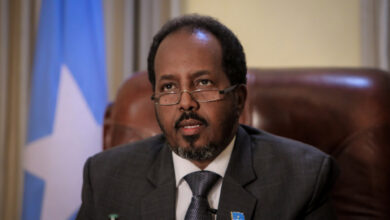
Somalia’s Government Announces Launch of Universal Voting Rights From 2024
Somalia’s government and federal member states on Sunday announced the introduction of universal voting rights from next year’s election, reported…
Read More » -
Somalia
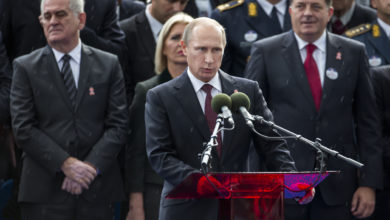
Russia’s Foreign Minister Says Moscow Ready To Offer Military Support To Somalia
Russia’s Foreign Minister on Friday said the government is ready to supply military equipment to support Somalia’s army in its…
Read More » -
Ethiopia
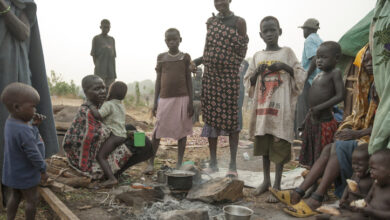
UN Receives Pledges Of $2.4 Billion To Support Drought-Affected People In Horn of Africa
The United Nations (UN) on Wednesday announced it has received pledges of $2.4 billion to fund aid operations for some…
Read More » -
Ethiopia
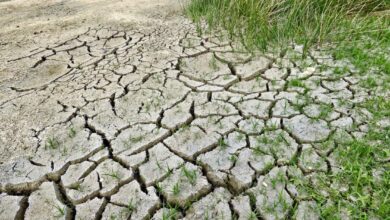
Drought In The Horn Of Africa Made Worse By Climate Change- WWA Study
The drought in the Horn of Africa has been made worse by human-induced climate change, according to a new report…
Read More » -
Somalia
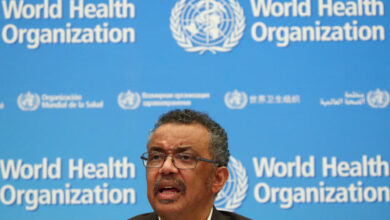
WHO: 80 People Killed, Over 30,000 Displaced In Renewed Clashes In Northern Somalia
The World Health Organization (WHO) on Friday said sporadic clashes between security forces and local militias in northern Somalia’s Las…
Read More » -
Somalia
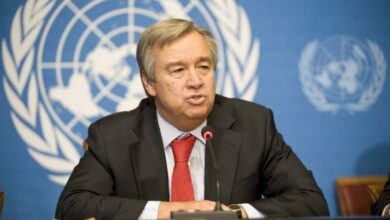
UN Chief Antonio Guterres Appeals For Massive International Support For Somalia
The United Nations (UN) chief Antonio Guterres on Tuesday appealed for massive international support for the drought-hit Somalia as it…
Read More » -
Somalia

UN Humanitarian Coordinator Makes For Aid Appeal For Millions Facing Famine Risk
The United Nations (UN) Resident and Humanitarian Coordinator for Somalia, Adam Abdelmoula, on Wednesday made an appeal for sustained support…
Read More » -
Somalia

Somalia’s Longest Drought May Have Killed 43,000 In 2022, New Report Claims
Somalia’s longest drought on record led to an estimated 43,000 deaths last year, half of the total deaths of children…
Read More » -
Ethiopia

Drought Trends In Horn Of Africa Worse Than 2011 Famine- IGAD Climate Center Claims
Drought trends in the Horn of Africa are now worse than the conditions experienced during the 2011 famine in which…
Read More » -
Somalia
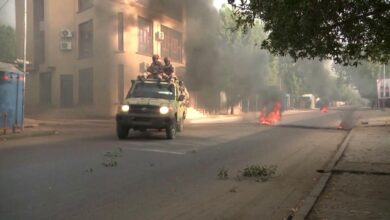
UN Appeals For Independent, Impartial Investigation Into Somaliland Clashes
The United Nations (UN) on Tuesday appealed for the launch of an independent inquiry into violent clashes in Somaliland, reported…
Read More » -
Somalia
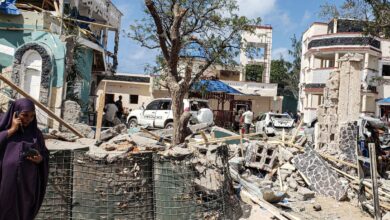
Somalia’s Military Troops Capture Strategic Towns From Al-Shabab In Galmudug Region
Somalia’s government-led forces on Monday announced they have captured two towns, which were previously in control of Al Shabab militant…
Read More » -
Somalia
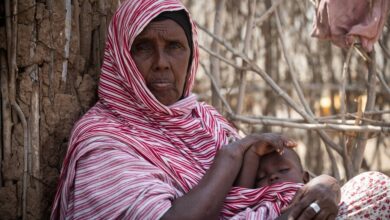
OCHA: Full-Blown Famine Narrowly Averted In Somalia, Underlying Crisis Still Persists
The United Nations Office for the Coordination of Humanitarian Affairs (OCHA) on Tuesday said a full-blown famine has been narrowly…
Read More » -
Somalia

Somalia’s Army & Allied Militia Recapture Key Town From Al-Shabab Extremists
Somalia’s government forces and allied military troops have recaptured a strategic town held by al-Shabaab extremists since last six years,…
Read More » -
Somalia
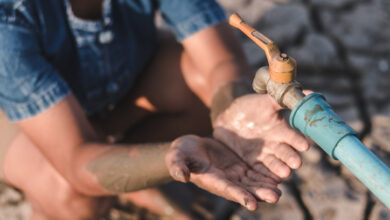
FAO Increases Cash Transfers To Alleviate Impact Of Drought In Rural Somalia
The United Nations Food and Agriculture Organization (FAO) on Tuesday said that it has bolstered humanitarian response in Somalia through…
Read More » -
Somalia

Somalia’s Security Forces End Hours Long Seige By Al Shabab Militants In Mogadishu Hotel
Somalia’s security forces on Monday ended a deadly 21 hours long siege by Al Shabab militants who stormed a popular…
Read More » -
Somalia

Somalia’s President Hassan Mohamud Vows to Continue War On Al-Shabab
Somalia’s President Hassan Sheikh Mohamud on Tuesday vowed to continue the war against al-Shabab militants in an address to lawmakers,…
Read More » -
Somalia

UN Human Rights Chief Decries Steep Rise In Civilian Casualties In Somalia Attacks
The United Nations (UN) human rights chief on Monday said human rights and humanitarian situation is deteriorating in Somalia due…
Read More » -
Kenya

Kenyan Government Delivers Emergency Relief Supplies To Neighboring Somalia
The Kenyan government Thursday delivered emergency relief supplies to neighboring Somalia, just a week after twin bombing attacks jolted the…
Read More » -
Somalia

US Treasury Department Targets ISIS In Somalia With Weapons-Related Sanctions
The United States (US) on Tuesday imposed sanctions targeting the Al Qaeda-linked group, ISIS, in Somalia, designating members of the…
Read More » -
Somalia
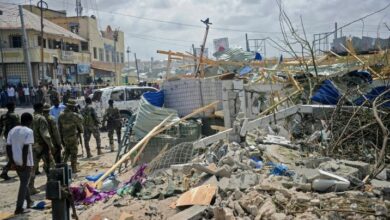
Somalia’s Health Minister: Death Toll From Mogadishu Car Bombings Rises To 120
Somalia’s Health Minister Ali Haji Aden on Monday said the death toll from a pair of car bombings in Mogadishu…
Read More » -
Somalia

UNICEF Warns Thousands Of Malnourished Children At Risk Of Dying In Somalia
The United Nations Children’s Fund (UNICEF) on Tuesday warned thousands of severely malnourished boys and girls in severe drought-hit Somalia…
Read More » -
Somalia
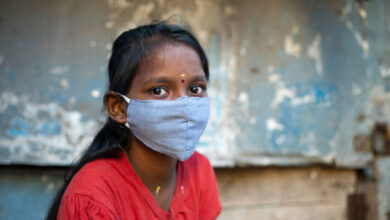
UNICEF: More Than 700 Children Have Died In Somalia Nutrition Centers This Year
The United Nations children’s agency (UNICEF) on Tuesday said hundreds of children have already died in nutrition centres across Somalia,…
Read More » -
Somalia

UN Humanitarian Chief Martin Griffiths Says Famine At The Door In Somalia
The United Nations (UN) Humanitarian Chief Martin Griffiths on Monday warned that Somalia was on the brink of famine due…
Read More » -
Ethiopia

WMO Warns Of Worsening Drought In Horn Of Africa Due To 5th Failed Rainy Season
The World Meteorological Organization (WMO) on Friday warned of worsening drought in the Horn of Africa region in the face…
Read More »


